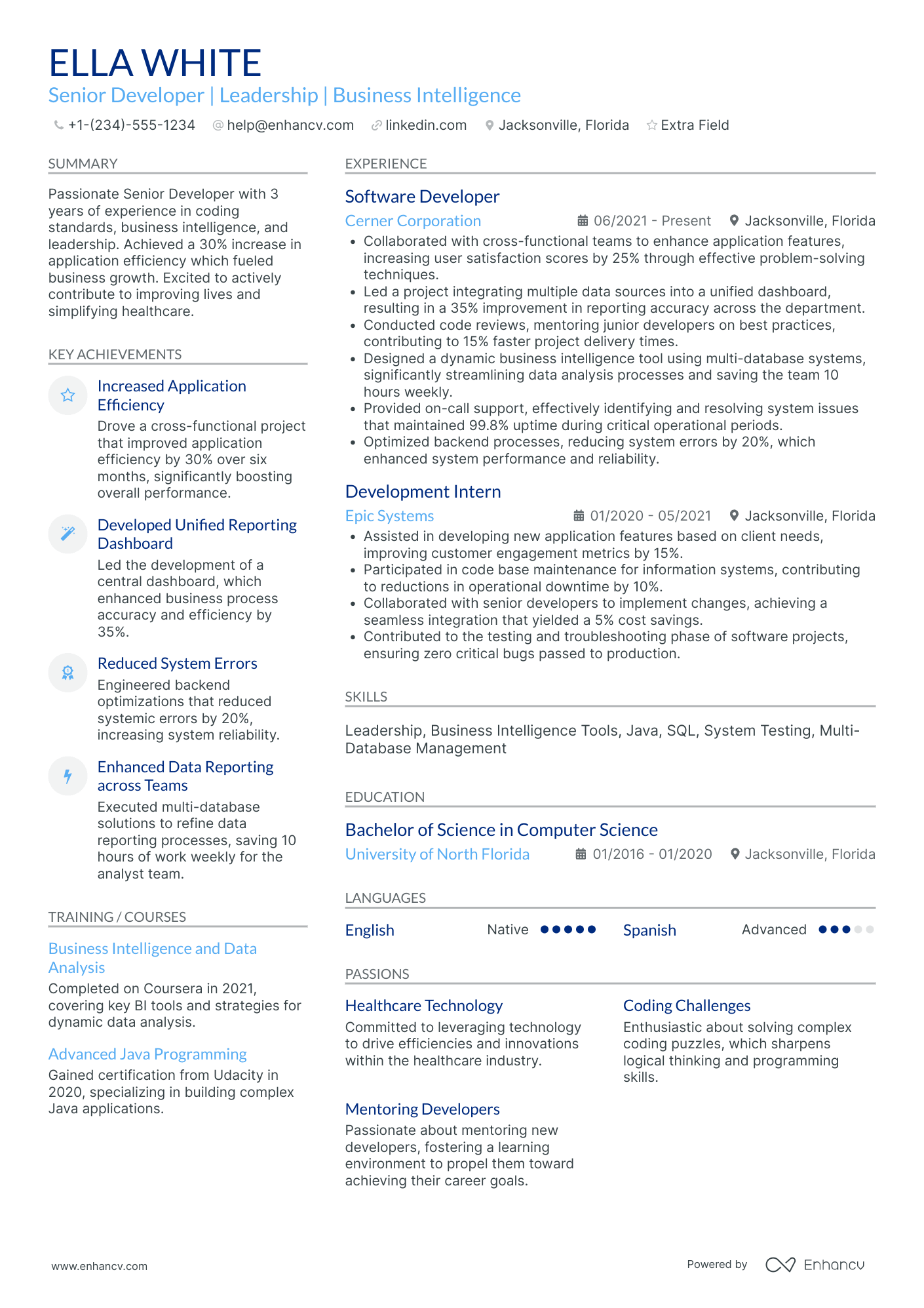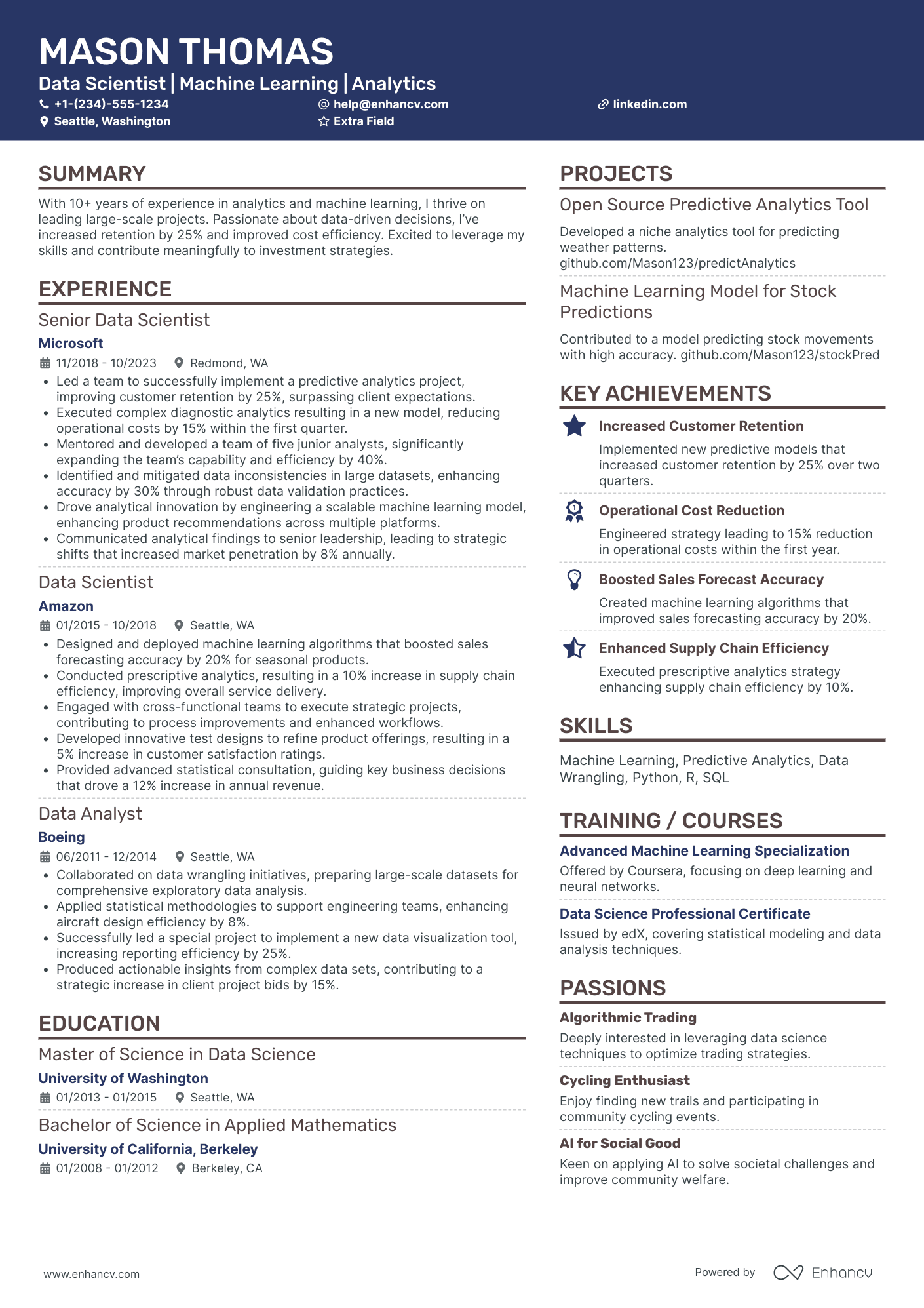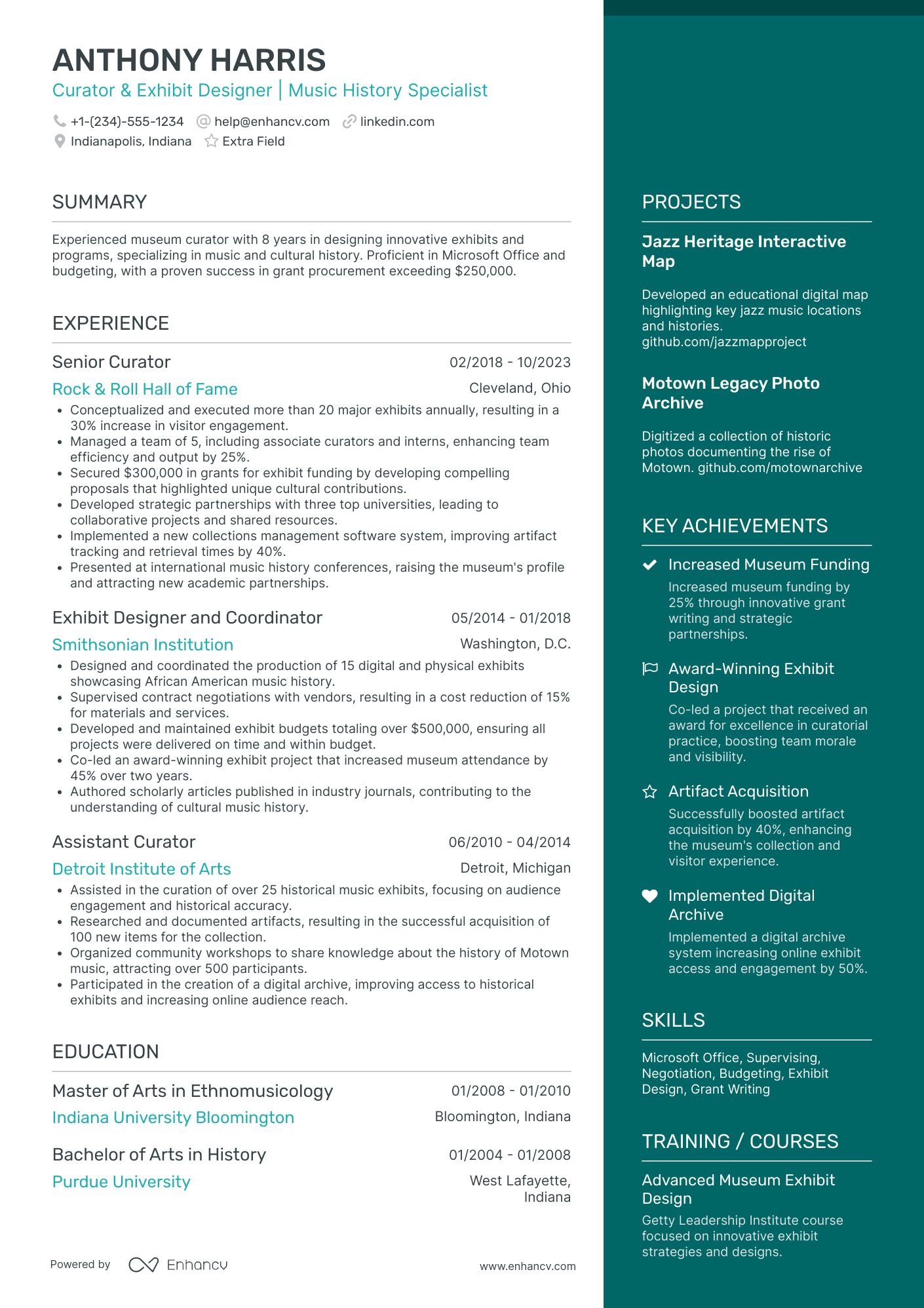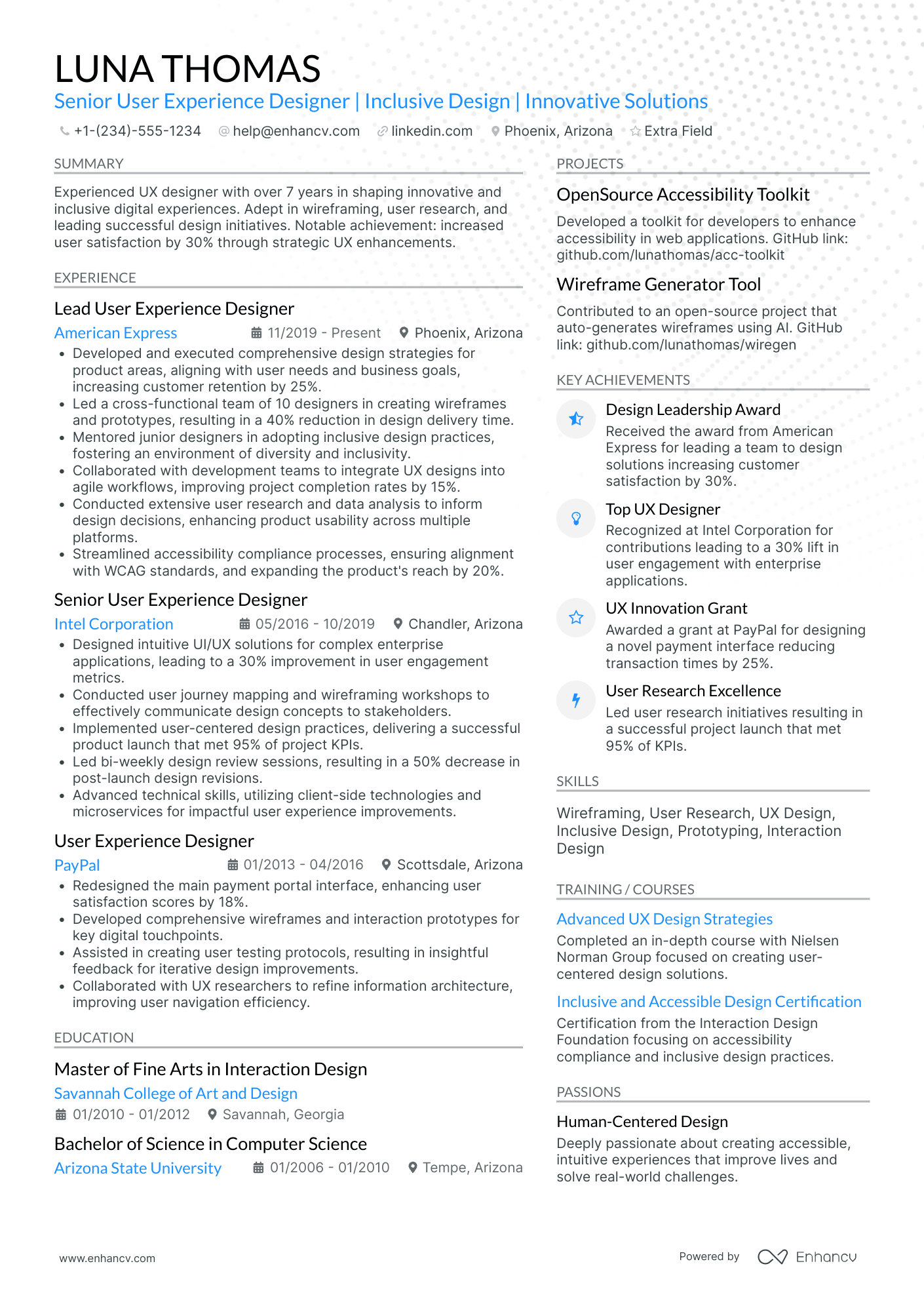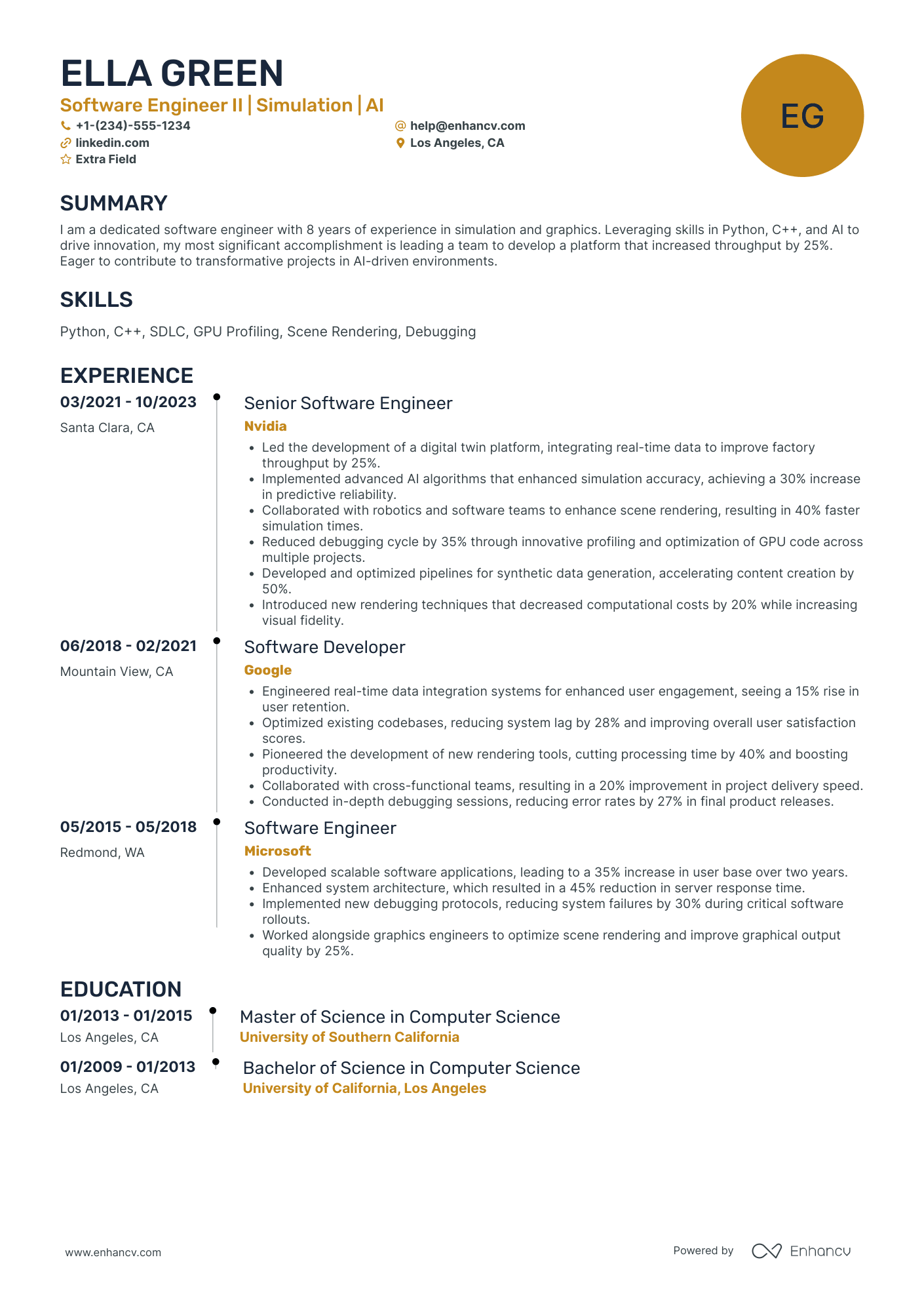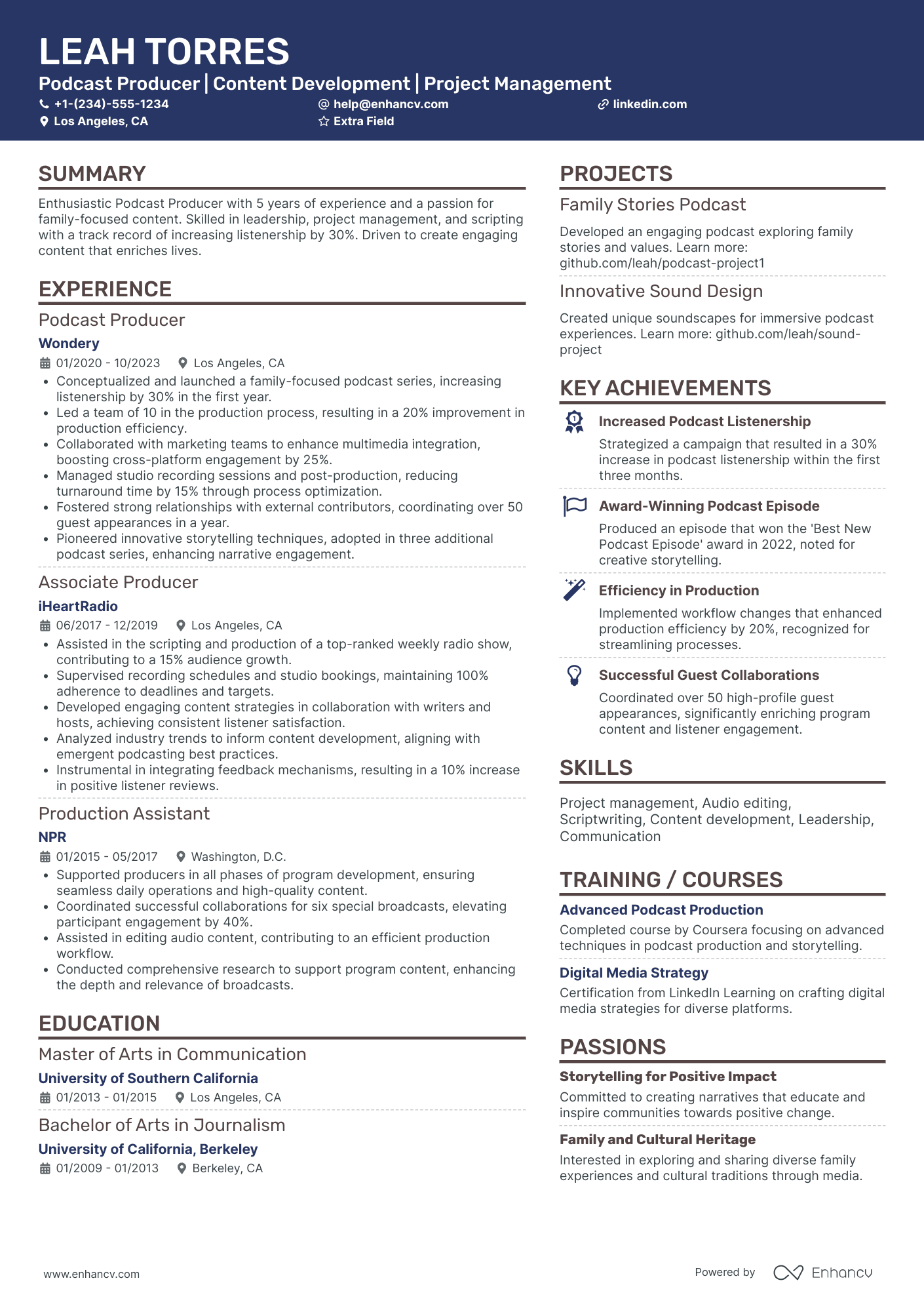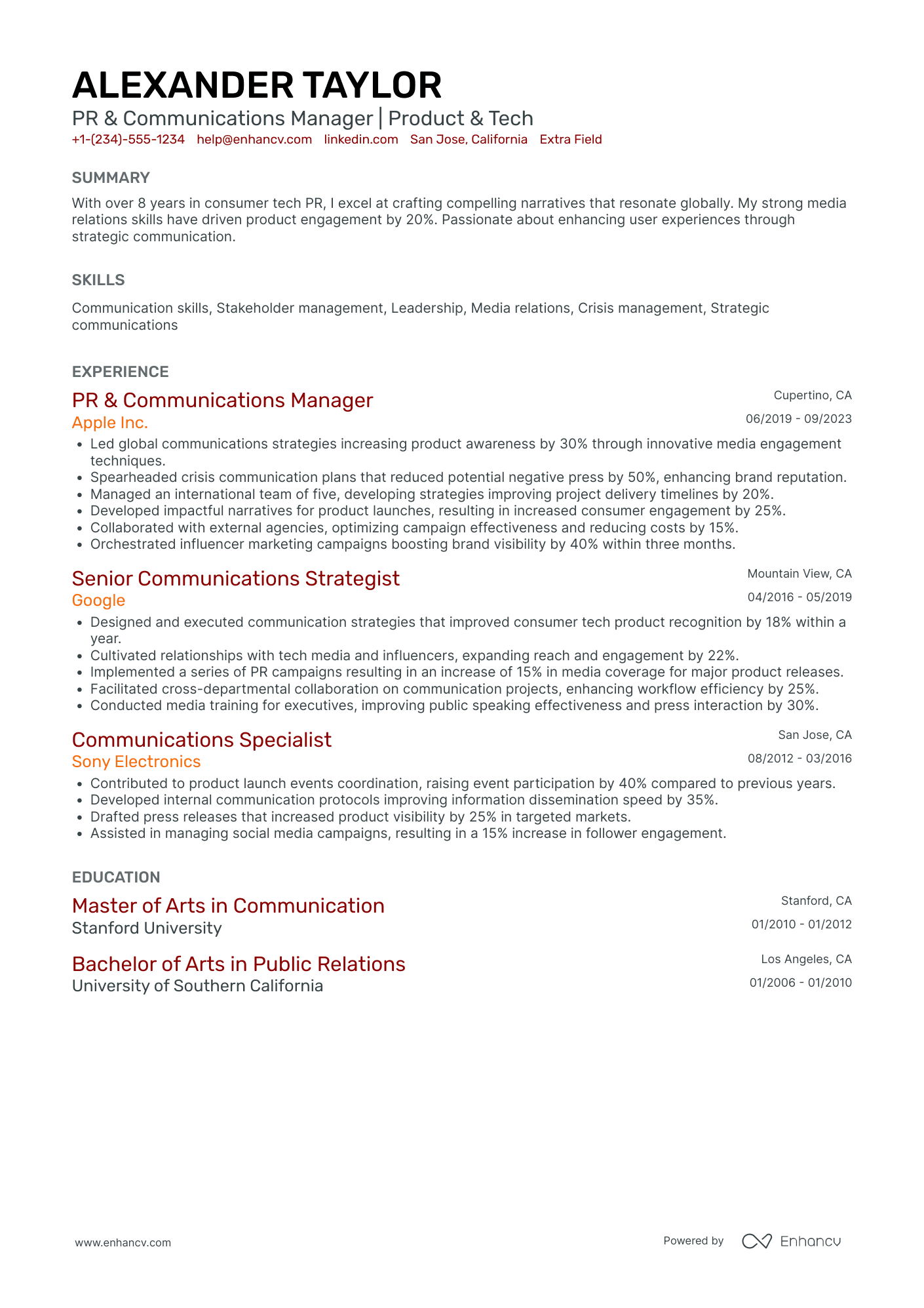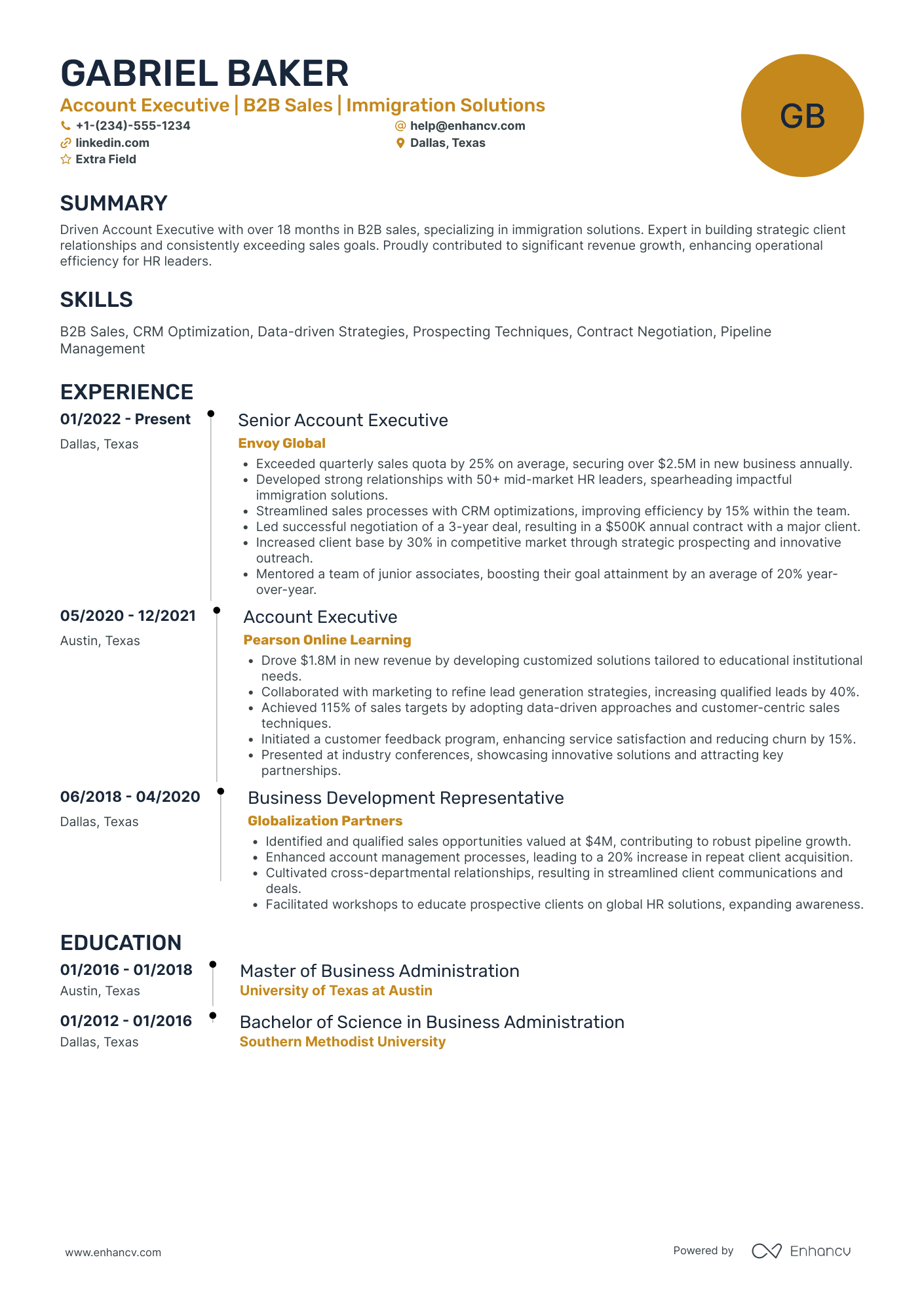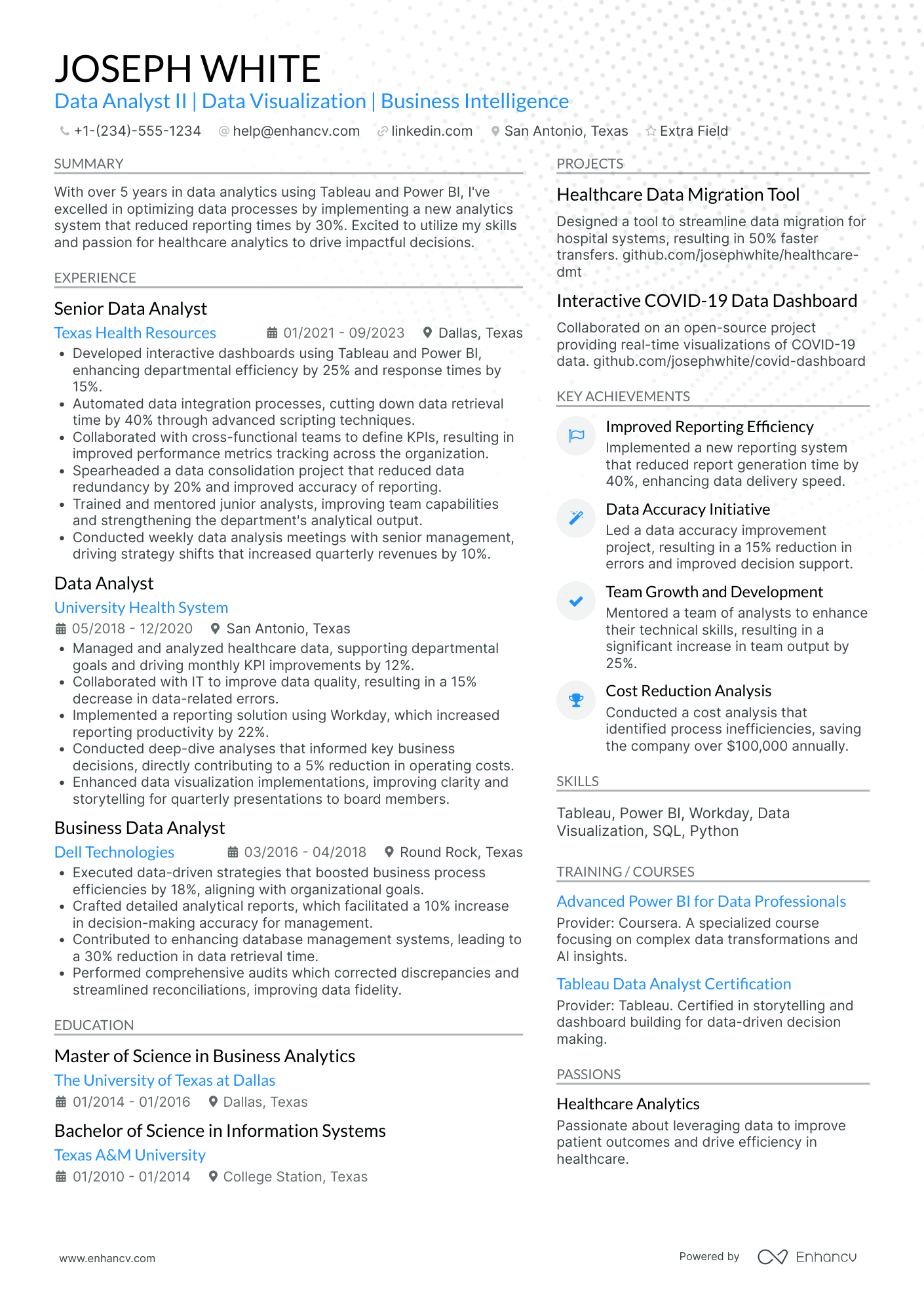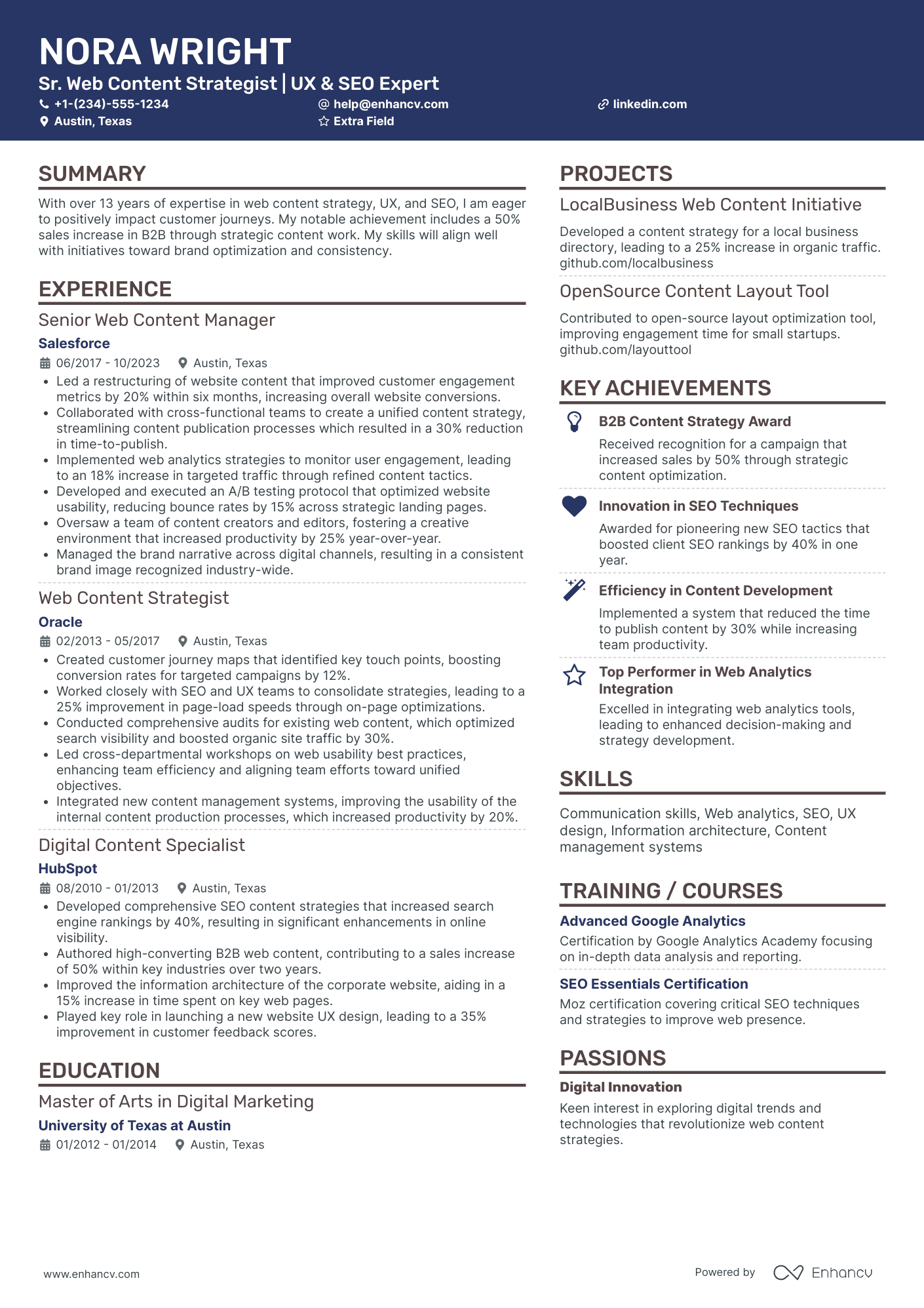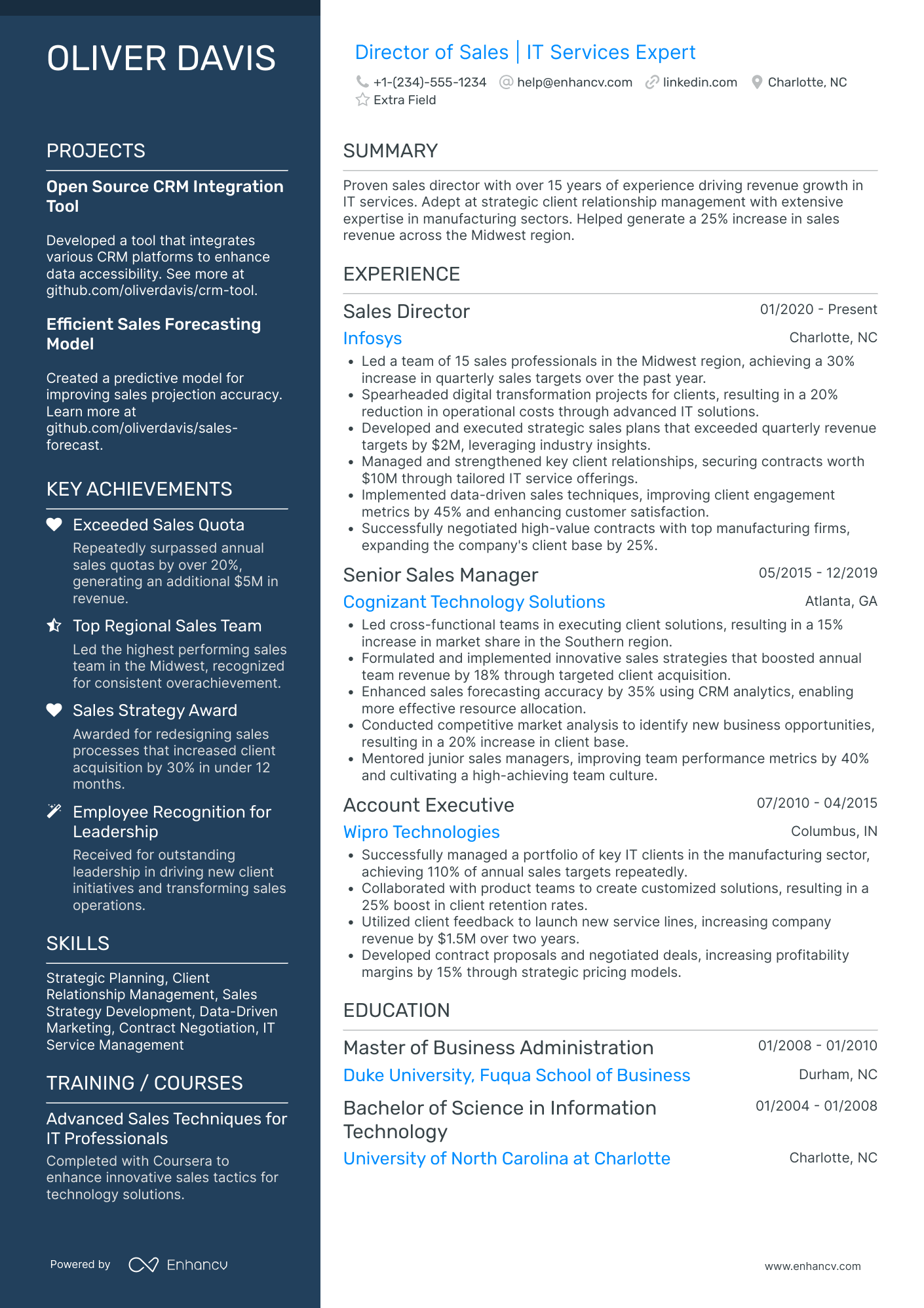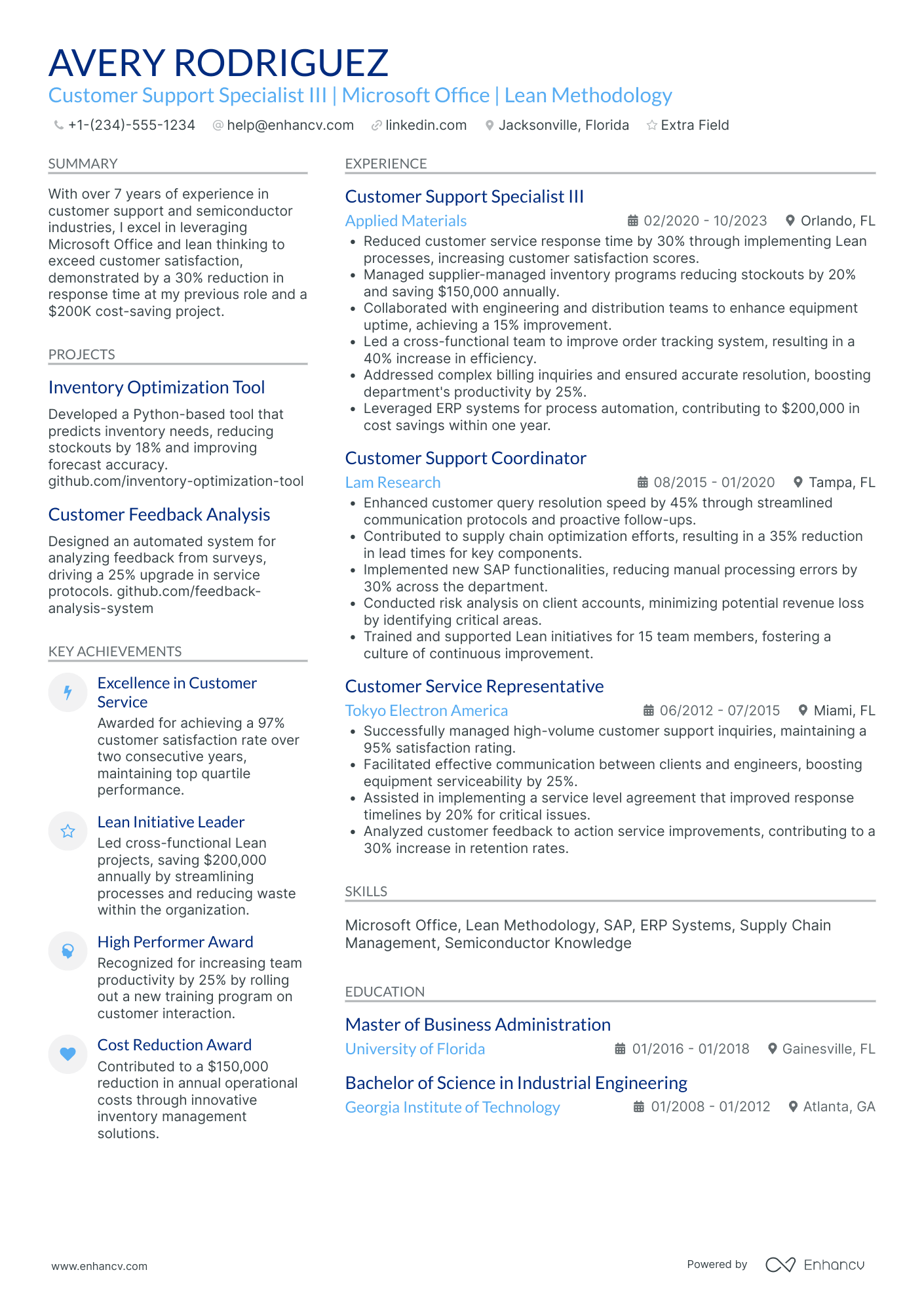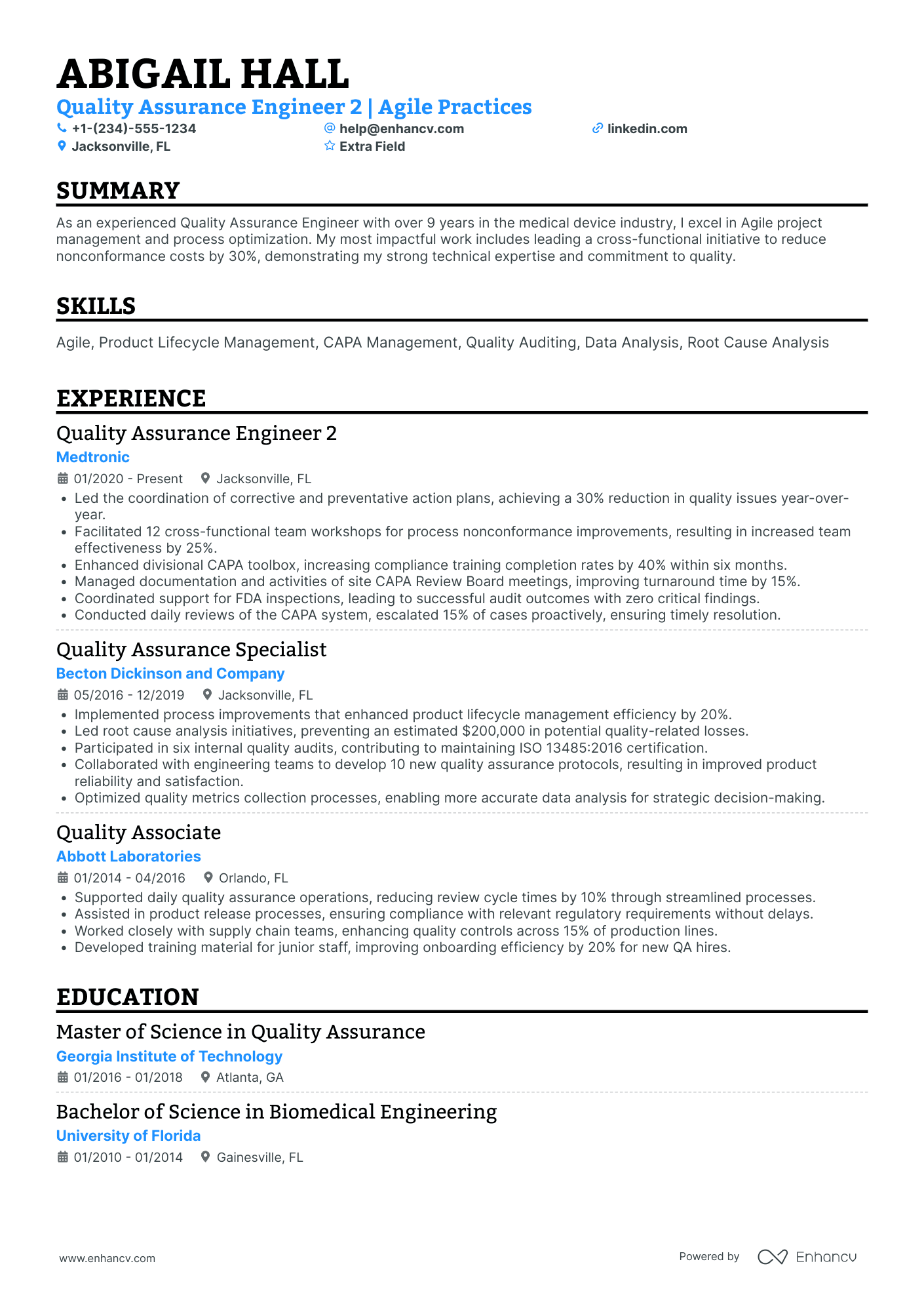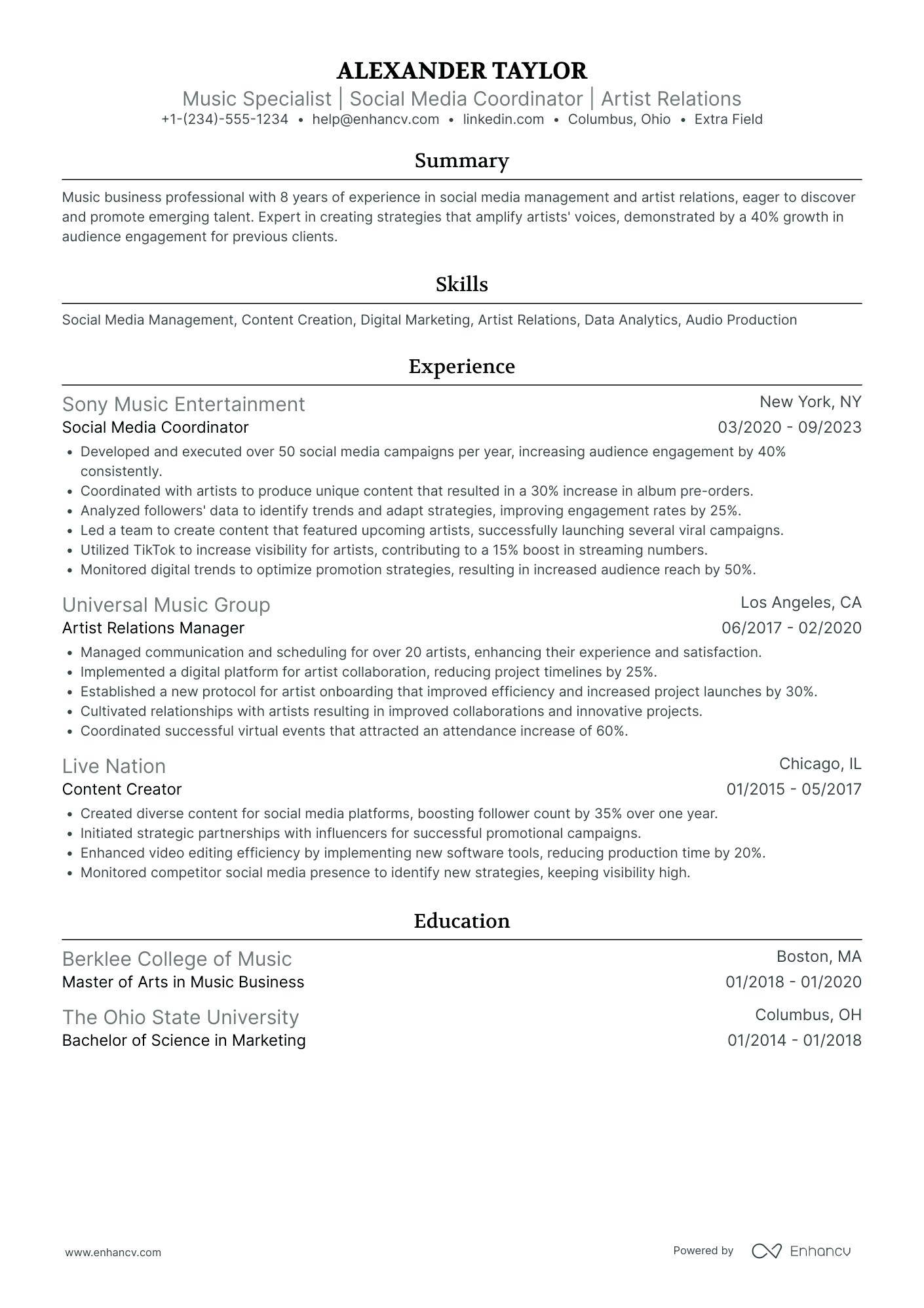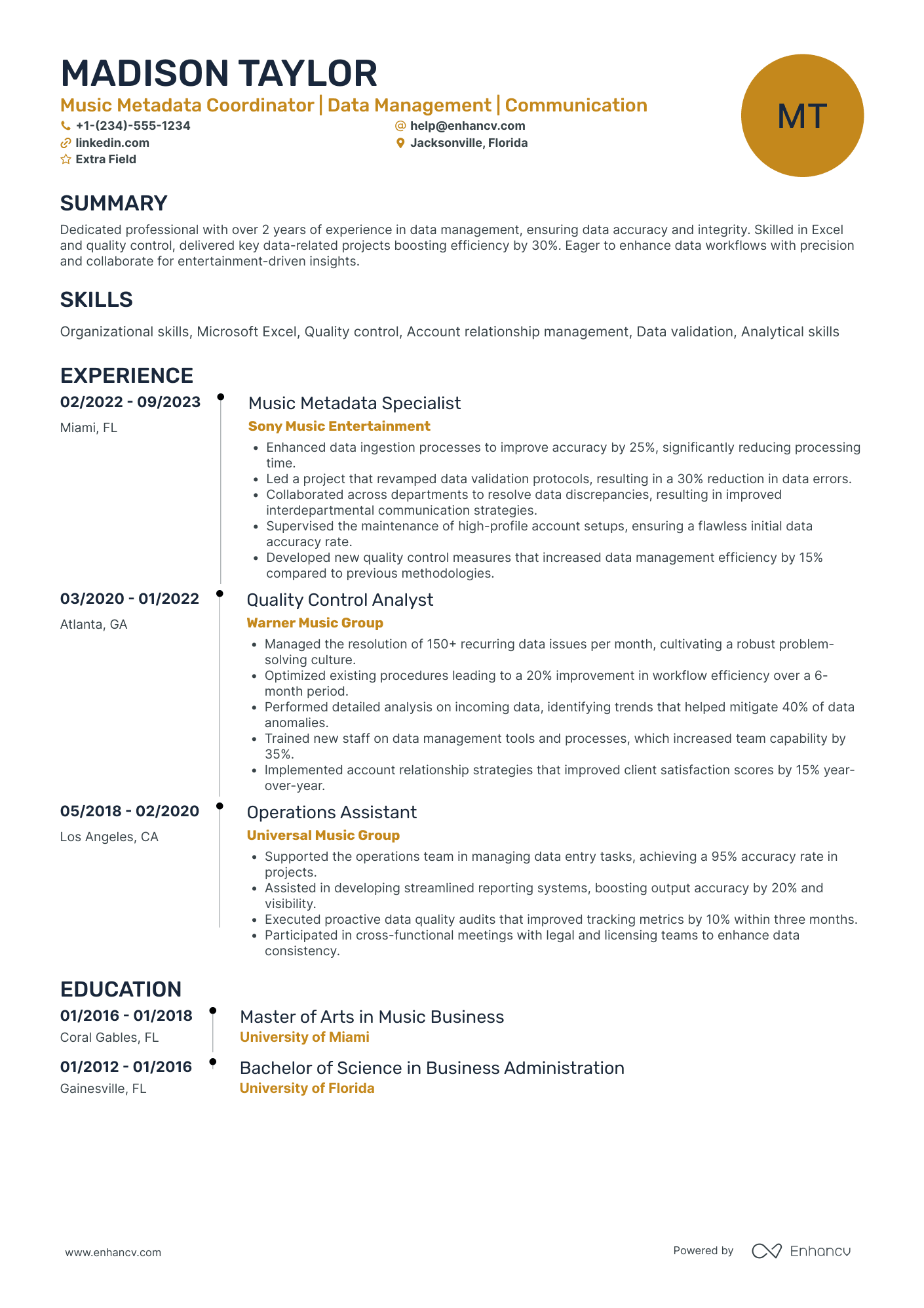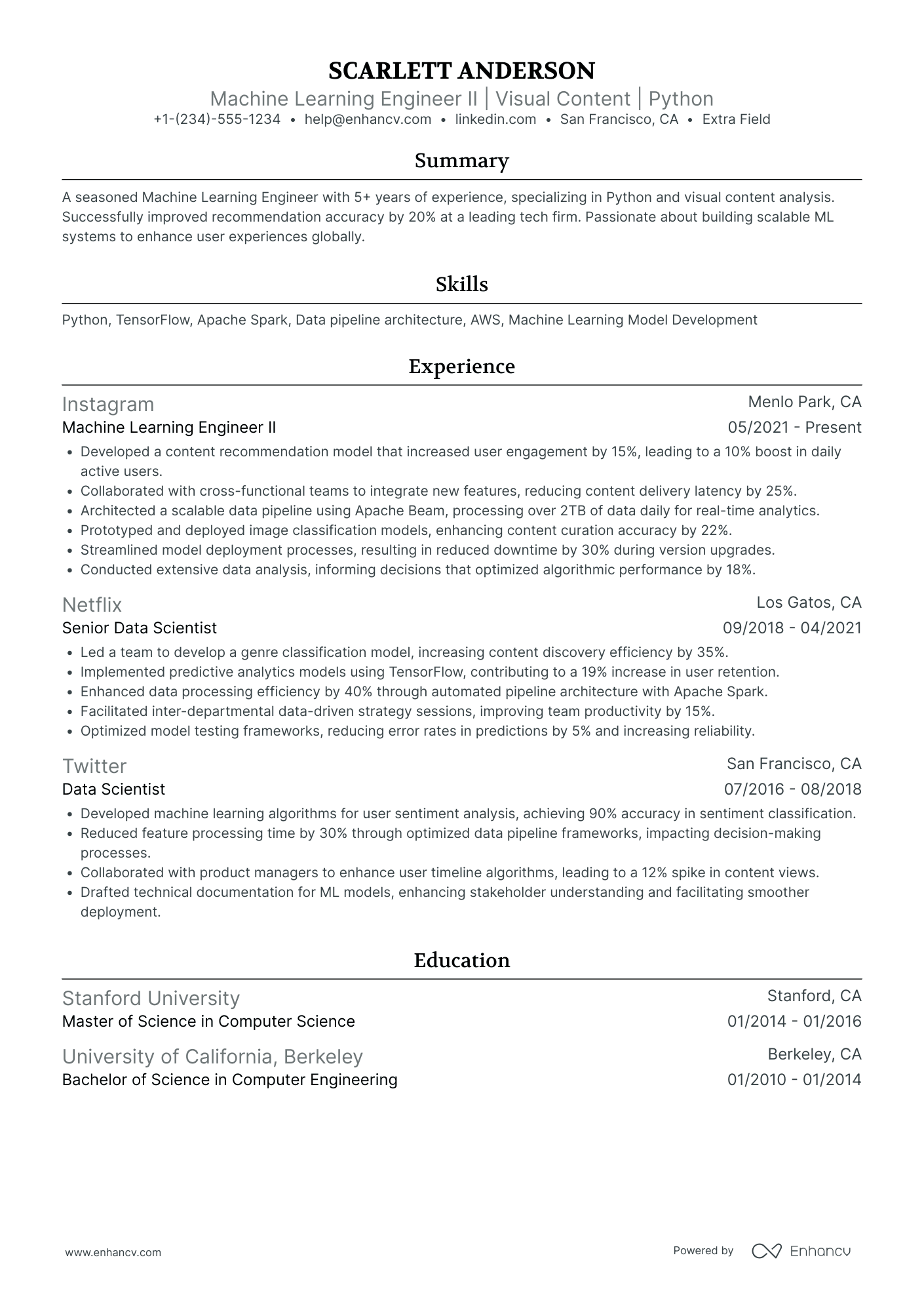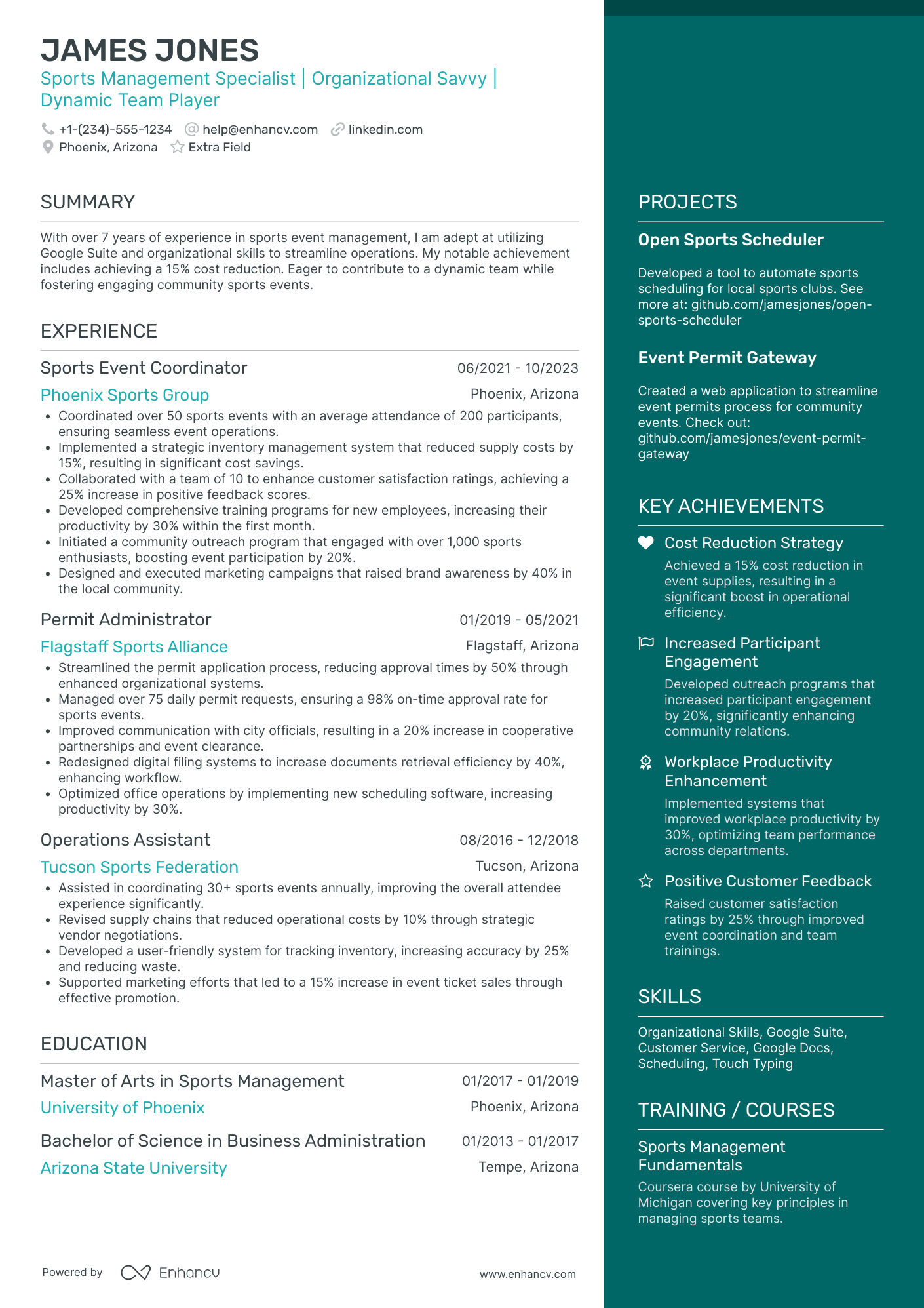Imagine your life having a soundtrack that is playing all day. Everywhere you go. Even when you go to sleep.
What would it sound like?
How would the happy moments differ from the sad ones? How would you react if the music suddenly shifts, and it stresses you out?
Being able to predict the future is a superpower many of us want. But what would happen in your future was based on soundtrack changes?
What would interviewing for Spotify be like? What would their almighty algorithm recommend?
Will 'Walking on sunshine' play? Or a tune from a true-crime podcast?
Scary to think about it this way, isn’t it?
Yet, you’ll know for sure whether you’ve aced your interview or not. This begs the question, is there anything you can do to change the odds in your favor?
Of course, there is! If you want your experience to sound like a 80s bop and get the job, all you have to do is make your resume stand out. But how?
We’ll show you! Just keep on reading, and we’ll share our tips and tricks on how to land a job at Spotify.
Here are the tips our shuffle playlist can teach you.
- What Spotify recruiters are looking for in a potential employee
- What can you do to prepare for both your resume and the interview
- Which resume formats are preferred by Spotify hiring managers
- How to tailor your resume to the role you’re applying for and why this is important
- How to align your experiences with the company’s goals and appeal to recruiters
- Which character qualities and skills are trending and how to balance them out
- What else can you add to leave a lasting impression on hiring managers
Looking for related resumes?
- https://enhancv.com/resume-examples/project-manager-resumes/
- https://enhancv.com/resume-examples/data-scientist/
- https://enhancv.com/resume-examples/big-data-engineer/
- https://enhancv.com/resume-examples/business-analyst/
- https://enhancv.com/resume-examples/product-manager/
What does it take to create the perfect Spotify resume?
Being at the epicenter of so much innovation and enthusiasm can be overwhelming. It usually makes people feel as if there is no way left to get noticed.
But why do I need to think so much outside the box, we hear you ask.
Well, the company posts new available positions every day. And with thousands of applicants trying to get recruiters’ attention every day, it’s tough.
To put this in perspective, the acceptance rate for new interns at Spotify is roughly 0.07%.
Yikes!
You need to turn these odds in your favor.
How?
Before you apply, make sure you:
- Have researched the company and the role you’re applying for
- Are comfortable with Spotify’s agile work culture
- Confirm who the hiring managers for your position are
A good way to see whether you’ll fit right in with your potential colleagues is to visit company events.
For instance, Spotify holds tech meetups which are open to the public.
There you can meet current company employees and ask them about their work. As well as the challenges they face.
Also, remember what we said about confirming who the recruiters are? Yes, this will be helpful:
- When you send them a thank you over LinkedIn for considering your application
- Should you need any accommodations during the interview later on
So, how do you prepare for a career at Spotify? What does your resume need to be like to outshine every other candidate?
One advice we always give is to start with company research. More specifically, their core values and mission statement.
Why?
Mission statements can be very telling. They provide insights into what the company’s future goals are and how they plan to achieve them.
As such, you need to appeal to those aspirations. After all, your job will be to form the building blocks towards that future.
Consider whether your professional goals align with the company’s future plans.
Spotify’s mission statement goes a little something like this:
"To unlock the potential of human creativity by giving a million creators the opportunity to live off their art and billions of fans the opportunity to enjoy and be inspired by it."
Spotify
To be able to complete such a mission, the company’s employees must also be original themselves.
That’s why Spotify recruiters suggest you build a personal brand. Be innovative and show up in a way few would think of.
For example, Emily Vu got the job by re-creating the Spotify interface for her resume.
There are those who have used other platform features. Such as the Discover Weekly Playlist or Spotify Wrapped. While others have built and applied with website resumes.
But you don’t need to be so tech-savvy to grab recruiters’ attention. All you have to do is to frame your resume in a way it makes sense to your experiences.
With this in mind, which resume formats are best?
Generally, you have three options:
- Reverse-chronological resume - perfect for industry veterans and experienced specialists
- Hybrid resume - best for those changing their career path. Or those with minimum experience
- Functional resume - usually used by college grads
Although each layout has its own merits, hiring managers prefer the reverse-chronological format. Regardless of your professional experience.
Why?
Because they regard each candidate with the respect they deserve. Including recent college graduates.
Spotify recruiters expect you to treat your academic work with the same approach. Just as you would if it was a practical work experience.
This is the reason the company’s internship process resembles a proper job interview. Albeit, a shorter version of it.
Even if you’re a current student applying for an internship or switching careers. Share the stories you’re proud of, highlight your successes.
Don’t believe us? Check out Sam’s story on getting hired at Spotify with Enhancv.
Moving onto the resume components, which should feature on yours?
Must-have sections to add to your Spotify resume:
- A header to list your contact details and reference your portfolio
- A resume summary or objective to draw attention to your biggest achievements
- An experience segment to emphasize how your work aligns with the role offered
- A skills box to display the range of your talents, both technical and social
- An education and certificates sections to show your work is up to par with current standards
- Other supplements you can include to support your application
Good, we have the scope and the frame of your resume now. But what should be the focus of each section?
What do Spotify recruiters want to know about you?
- Can you describe yourself in three words? What would they be?
- Are you agile and flexible in your work methods? Can you provide examples?
- What was the greatest challenge you’ve faced so far? Walk us through how you’ve tackled it.
- Which project are you most proud of? Why? What makes this project more special than the others?
- If you were operating as [the role you’ve applied for], how would you handle user growth? What strategy would you use and why?
- Are you familiar with exploratory research? If yes, provide an example? What was the outcome?
Most of the questions you’ll have to answer during the interview will have to do with strategy.
So, on top of talking about past projects, you’ll also have to discuss case studies. This is where being familiar with the position and the company comes in handy.
Show that you’ve taken the time and consideration to research their issues.
After you submit your resume, follow up with your hiring manager on LinkedIn. Avoid being generic. Instead, send a sincere thank-you message.
Spotify states that there is no way to track your application status. But they make sure they return an answer, no matter the outcome.
If the results are not positive, you can re-apply for the same position only:
- After 6 months have passed since your last application
- The position is still available on their website
How to make the header of your Spotify resume exceptional
Starting at the top, the resume header is essentially your business card.
This box holds all your basic information plus links to relevant sources. Such as a portfolio, a website or business social media accounts.
So, what does the header consist of?
- Your full name
- Your current job title or the name of the position you’re applying for
- Your address - both city and state
- Contact methods - list at least two (preferably a phone number and an email address)
- Website or online portfolio
- Business accounts (LinkedIn, GitHub, Kaggle, etc.)
It’s important to:
- Keep the section up-to-date
- Check for any typos or missing information
- Confirm all included links are in working order
2 Spotify resume header examples
Compare the following resume headers. Which one looks more convincing?
Without a doubt the second one shows more experience and professionalism.
Why?
Let’s look at the first example more closely.
The candidate’s title sounds generic. Even if this is her current role, there are many types of backend engineering jobs.
A way to get yourself noticed would be to specify the work you specialize in. Like in the second example.
Adding ‘Machine Learning Specialists’ provides more context. This allows the recruiter to easily vet whether you’re suitable for the job at hand.
If you’re aiming for an ML position, this supplement hints at your expertise. All without making the recruiter scan the rest of your resume.
As we mentioned, provide at least two methods of contact. Especially if you’re applying for a remote position.
Sometimes the hiring managers are located in a different time zone. To make the interview process comfortable for both sides, give them a list of contact options.
Last but not least, Brynn hasn’t listed any side projects, portfolios or social media.
Why are these significant?
"What I’m hearing from recruiters in the tech field is that cover letters are dead. They’re looking at people’s LinkedIn and checking resumes on their mobiles. Enhancv looks great on mobile and it let me put all the stuff I would have packed into a cover letter right on the resume."
Sam, Strategy Operations Lead at Spotify
It follows the same logic the job title description does in your header. It makes the applicant selection process that much easier. Plus, you can wow recruiters with your projects.
Do you need a summary or an objective for your Spotify resume?
Before we get to this question, we have to talk about how these differ from each other.
Both, the summary and the objective, serve the same goal. They highlight your best accomplishments. And attest to how you’ll benefit your future employer.
The main difference is who makes the statement.
If you’re a seasoned expert, the resume summary allows you to highlight your achievements.
By contrast, the resume objective is suitable for those with little to no experience.
Why?
Because you can show how your personal goals align with the plans of your future employer.
The best way to illustrate this is with a few sample summaries.
3 Spotify resume summary examples
Take a look at the following section:
To put it bluntly, this sounds fake. The reason the summary is unconvincing is because:
- It ‘s supposed to represent an industry specialist with 10 years of experience. Yet, the applicant has nothing impressive to show for it. Not even one award.
- The whole text is too vague, ambiguous and generic. It can apply to anyone. Worse still - it reads like a job description.
- There is no mention of how the candidate will help Spotify achieve their goal. And listing personal goals alone won’t get you far.
How can this be improved?
Have a look at an edited version of the summary:
It’s like day and night, right?
You have a bit of everything here. And each piece supports the other. You have the:
- Exact amount of experience the candidate has
- Tools and languages the individual has mastered during their professional development
- Names of previous employers. These suggest the scope and scale of project the applicant has handled.
- Languages the candidate is proficient in. This is a good indicator for which markets and users the individual is better equipped to tackle.
But what if you’re a recent college grad?
You can still make a good impression!
Consider the resume objective below:
Why does this work?
There are three key points here. The applicant displays:
- Both an interest and an adequate level of expertise about the industry
- Proactivity and willingness to develop further skills. All qualities Spotify recruiters are searching for
- How they will work towards achieving Spotify’s goal to reach 1 billion active users
Such a strong pitch will surely prompt recruiters to continue reading your resume.
Optimize your resume summary and objective for ATS
Drop your resume here or choose a file.
PDF & DOCX only. Max 2MB file size.
How to make the most of your Spotify resume experience section
When building the bulk of your resume, keep in mind to:
- Note the words and phrases used in the job description
- Reference past work and tie it with relevant and current Spotify projects
These will help you tailor your resume to the position you’ve chosen.
Why is this important?
First, you need to pass Spotify’s ATS system. This is a software recruiters use to weed out subpar resumes. For example, almost empty documents or completely irrelevant ones.
Think of it as having to find the secret message in the job description. Once it is clear and you list it on your resume, you move onto the interview stage.
Moreover, since Spotify is a big company, there is a second layer of application vetting. The company’s HR team assigns particular keywords to different teams.
Examine the way Spotify describes job requirements in the ad. Try to use the same phrasing while referencing your own projects.
If you’ve done your company research well, this should be a piece of cake! Just align your experiences to Spotify’s interests and future plans.
Want to see what this looks like in action?
3 Spotify resume experience examples,"
Take a look at the experience sample section below:
- •Planned and conducted exploratory user research.
- •Translated insights in actionable recommendations.
- •Applied deep analysis to document workflows and processes.
It’s mediocre at best.
Why?
The entry looks sloppy because:
- No company description or address have been provided. These hint at the industries you’re familiar with. As well as the scope of the projects you’ve handled.
- UI/UX isn’t a proper job title, it’s a discipline.
- The bullet points look like phrases taken directly from the job description. No extra value has been added. There’s no mention of projects, nor results.
That’s why it’s key to lead with data. Yes, anyone with the right experience can do the work listed in the entry. But outcomes and achievements make all the difference.
Here is a better version of the same experience section:
- •Successfully launched 14 new products for 3 different EMEA clients, following a thorough user research, A/B testing and localization for each individual country in the region.
- •Helped scale 7 products and services by analyzing existing customer data and identifying opportunities for the development of new product features.
- •Increased product design productivity by 62% as a result of building and mentoring an in-house UX and Marketing team which provided quick user feedback and insights.
As a bonus, we’re sharing another good entry. This time for the backend engineers among you.
- •Boosted conversion rate by 49% for 5 different clients by developing a Python program which provides future consumer behavior based on historical data.
- •Reduced product development time by 36% by facilitating idea and knowledge exchange between cross-functional teams.
- •Achieved a 60% revenue increase across all clients by developing an algorithm which targeted different audiences with the right ads.
Social or technical: which skills do Spotify recruiters value more?
If you look closely at Spotify’s job descriptions, you won’t see much technical jargon. Even for engineering and analytical positions.
Sure, there’s the occasional programming language. But all the available jobs are described in terms of goals. And soft skills the company seeks.
Spotify’s recruiters are checking for a cultural match.
So, this is a tough one. Especially for professionals who rely heavily on their technical abilities.
This is not to say that the company doesn’t want tech-savvy individuals. Spotify recruiters want experts who can balance out their hard and soft skills.
But how?
The key is to link each of your skills to a particular project and its outcomes.
Flaunting your technical talents the right way
Displaying results with hard skills is easy.
For example, if you’re an engineer, you can present a program you’ve developed. More importantly, you should explain what it contributed to its users.
Measure the impact of your work. Share your proudest accomplishments. Show how your work benefits those around you.
Numbers speak more than resume buzzwords.
Jot down your top 5 technical abilities. Compare them to the job description. See whether there are any matches.
If there is an overlap, think of past experiences which you can describe on your resume.
If you have trouble coming up with ideas, here are some of the most popular tech talents for engineers:
Crucial hard skills for Spotify engineering specialists:
- Troubleshooting
- Agile methodology
- Growth mindset
- Able to make risk-informed decisions
- Network security
- Cyber security
- Network infrastructure and architecture design
- Machine learning
- Data management
- Algorithms
- Software development
- System design
- Data structures
- Research
- Automation
- C++
- Airflow
- Dataflow
- Spark
- Apache Beam
- Google Cloud Platform
- AWS
- Kotlin
- Typescript
- GraphQL
- Node.js
- React
- Next.js
- CI/CD pipelines
Not a developer or an engineer?
Have a look at trending hard skills for analysts and financial professionals.
Top technical abilities for Spotify business analysts:
- Data visualization tools
- SQL
- R
- Python
- Scala
- Tableau
- Power BI
- Matplotlib
- Ggplot
- Creator Studio
- Psychology
- HCI
- Social Science
- Economics
- Mathematics
- Statistics
- Computer Science
- Analytic skills
- KPIs
- Customer Insights
- User research
- Quantitative research methods
Essential hard skills for Spotify financial experts:
- Project management
- W-2s
- E*Trade
- WorkDay
- ADP SmartCompliance
- NetSuite
- Tax and regulatory reporting
- JIRA
- Microsoft Excel
- CPP
- Investment banking
- TMT equity research
- Venture Capital
- MBA
- Presentation skills
- ERP systems
- SOX and local compliance knowledge
Not sure which technical abilities to add to your resume? Check out our Top Hard Skills by Industry Sector article.
How to impress Spotify hiring managers with your soft skills
These can be harder to assess. But it’s not impossible,
All you have to do is use the same logic you use for hard skills:
- Link your social abilities to a project
- Measure the impact of your work
- Lead your entries with results
Here is how to do it:
Easy, right?
Now all you need is to review the job ad and match your abilities with the requirements.
We’ve gathered some of the most important social talents for Spotify hires:
Fundamental soft skills list for Spotify professionals:
- Strong work ethic
- Accountable
- Takes ownership
- Adaptable
- Self-driven
- Collaborative
- Innovative
- Risk-taker
- Creative
- Agile
- Accurate
- Inquisitive
- Willing to learn
- Able to learn from mistakes
- Sincere
- Transparent
- Open-minded
- Reliable
- Trustworthy
- Passionate
- Empathetic
- Motivational
- Inspirational
- Team Player
- Understanding
- Equal opportunity facilitator
- Initiator
- Inclusive
- Personable
- Good communicator
- Able to give and receive feedback
Which degrees do Spotify recruiters favor most
Depending on the role you’re applying for, you may be required to hold a specific degree. Some of these include:
- Computer Science
- Machine Learning
- UI/UX
- Mathematics
- Statistics
- Psychology
- Marketing
- Human-Computer Interaction
- Accounting
- Finance
However, there are positions which don’t have such strict requirements. Some teams need enthusiasts with enough interest in a particular field. For instance, machine learning.
Spotify provides the space for you to develop your interests further. But you may need to compensate with other skills and knowledge.
That’s why you need to read the job descriptions carefully.
Do you need to include certificates on your Spotify resume?
Of course!
Certificates are a great way to show your abilities are up to industry standards. They also complement traditional education.
So if you hold one, list it.
Don’t forget to verify the validity of your certificates. If you have an expired one, leave it out.
Are there any other sections you can add to your resume?
Definitely!
Additional sections can help you customize your resume. But which sections will grab recruiters’ attention?
You can include:
- Side projects
- Interests and hobbies
- Volunteer work
- Publications and articles
- Awards and prizes
- Association memberships
Show them your good sides!
Key takeaways
- Read the job descriptions carefully and tailor your resume accordingly
- Use the same keywords and phrases listed in the position requirements
- Stick to the reverse-chronological resume format
- Explain how your past work and skills align with Spotify’s business goals
- Be original and get creative when talking about your work experience
- Remember to always begin your bullet points with results
- Display how your character would be the perfect cultural fit for the company
Spotify resume examples
By Experience
By Role
